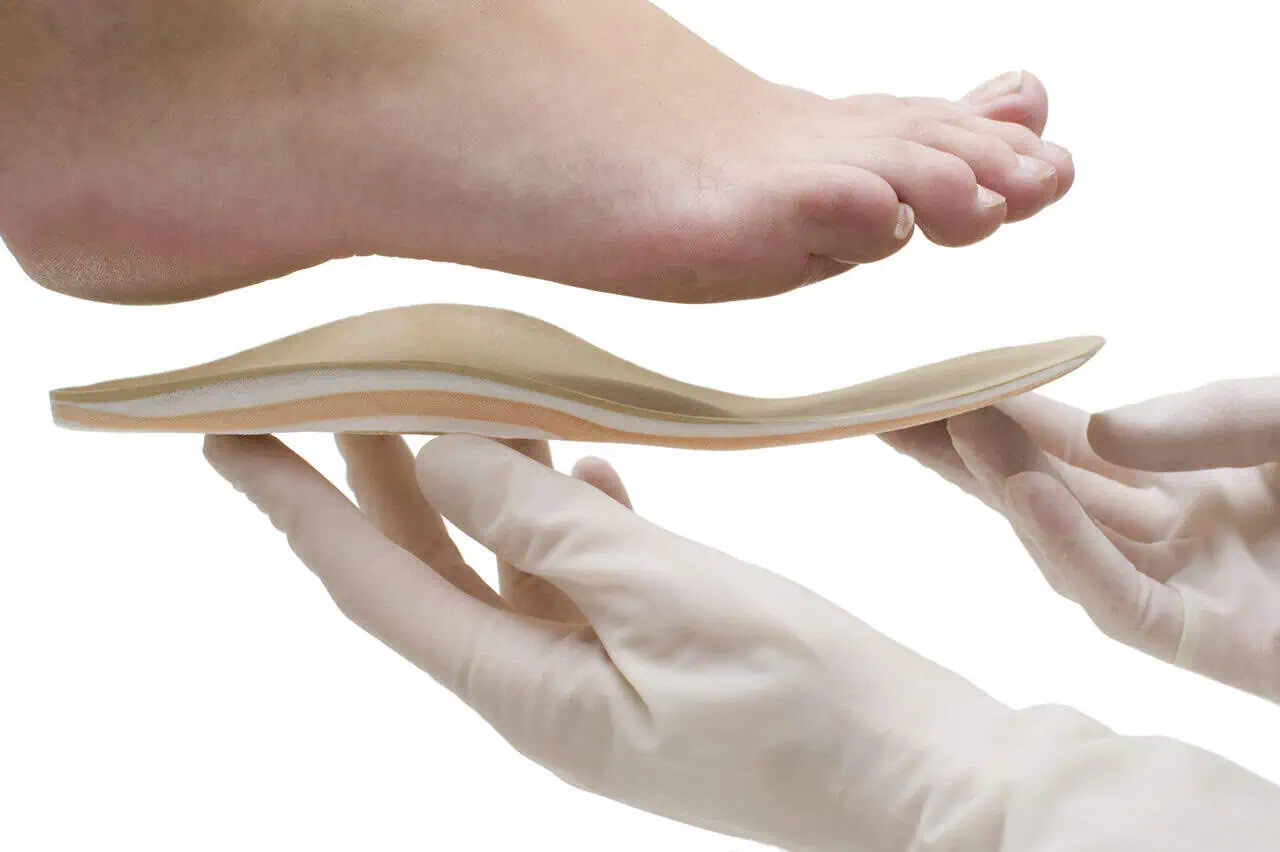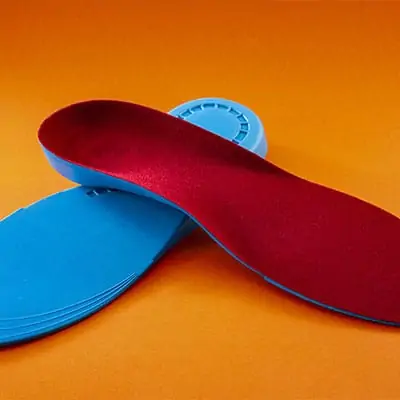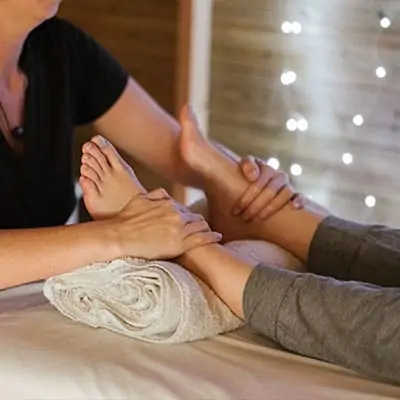Understanding Custom Orthotics
What are Custom Orthotics?
Custom orthotics are specialized shoe inserts designed to support and correct foot problems. They are made from precise measurements and molds of an individual’s feet, ensuring a personalized fit. Unlike standard insoles, custom orthotics are tailored to address specific issues, providing optimal alignment and comfort.
The customization process typically involves an assessment conducted by a trained professional who evaluates foot mechanics and gait patterns. This evaluation may utilize technology such as 3D imaging and pressure mapping to create a device that meets our unique needs.
Importance of Custom Orthotics for Diabetics
For diabetics, foot health is crucial due to the increased risk of complications such as neuropathy and poor circulation. Custom orthotics play a vital role in managing these risks, offering several benefits tailored to diabetic patients.
| Benefit | Description |
|---|---|
| Enhanced Comfort | Custom orthotics provide cushioning and support, reducing pressure on sensitive areas. |
| Improved Alignment | They help to correct foot positioning, minimizing strain on joints and muscles. |
| Pain Relief | Orthotics can alleviate pain associated with common foot conditions such as plantar fasciitis and heel spurs. |
| Reduced Risk of Ulcers | By redistributing pressure, custom orthotics help protect against foot ulcers, a common concern for diabetics. |
| Increased Mobility | With better support, individuals may experience enhanced mobility and stability, aiding in daily activities. |
The consequences of ignoring foot health can be severe for individuals with diabetes, potentially leading to infections and amputations. Recognizing the importance of custom orthotics for diabetics allows us to take proactive steps towards managing our foot health effectively. For further insights into how custom orthotics function and their benefits, we can refer to articles such as how custom orthotics work and benefits of custom orthotics.
Factors to Consider
When considering custom orthotics for diabetics, it is essential to understand how they can support foot health, the specific benefits they offer, and the common issues we might encounter.
Foot Health for Diabetics
Foot health is a critical aspect for individuals with diabetes. They are at an increased risk for various foot conditions due to complications such as neuropathy and poor circulation. Regular foot care and proactive measures are paramount. Below are some key considerations regarding foot health for diabetics:
| Consideration | Importance |
|---|---|
| Regular Foot Inspections | Detects problems early before they worsen |
| Maintaining Proper Foot Hygiene | Prevents infections and skin issues |
| Appropriate Footwear | Offers support and reduces strain |
By focusing on these factors, we can help minimize severe foot complications as outlined in our guide on signs you need custom orthotics.
Benefits of Custom Orthotics for Diabetics
Custom orthotics can provide several advantages for those with diabetes. They are designed to improve comfort and alleviate pain, while also addressing specific foot issues. Some of the key benefits include:
| Benefit | Description |
|---|---|
| Enhanced Comfort | Cushions the feet and improves overall comfort |
| Improved Biomechanics | Helps align the body properly, reducing strain |
| Pressure Distribution | Minimizes pressure on sensitive areas, reducing ulcer risk |
| Custom Fit | Tailored specifically to the individual’s foot shape |
For a deeper look into the advantages, we can refer to our article on the benefits of custom orthotics.
Common Foot Issues in Diabetics
Diabetics are prone to various foot conditions that can lead to complications if not addressed. Identifying these issues early on can help in managing them effectively. Here are some common foot problems associated with diabetes:
| Foot Issue | Description |
|---|---|
| Neuropathy | Loss of feeling in the feet, increasing injury risk |
| Plantar Fasciitis | Inflammation of the plantar fascia causing heel pain |
| Bunions | Bony bumps at the base of the big toe causing discomfort |
| Heel Spurs | Calcium deposits on the heel causing pain when walking |
| Achilles Tendonitis | Inflammation of the Achilles tendon causing heel pain |
Custom orthotics can be specifically designed to address these underlying conditions, as seen in our articles on custom orthotics for plantar fasciitis and custom orthotics for bunions. By understanding the challenges we face, we can make informed decisions about our foot care.
Types of Custom Orthotics
Understanding the various types of custom orthotics is essential for making an informed decision regarding your foot health. In this section, we will explore functional orthotics, accommodative orthotics, and the differences between custom made and off-the-shelf orthotics.
Functional Orthotics
Functional orthotics are designed to correct foot mechanics and improve the alignment of the foot and ankle. They typically target specific issues such as overpronation or supination, which are common in individuals with diabetes. These orthotics are crafted to support the arch and distribute weight evenly across the foot, promoting a more natural gait.
| Feature | Description |
|---|---|
| Purpose | Correct foot mechanics |
| Target Users | Individuals with alignment issues |
| Benefits | Improved gait, reduced foot pain |
Accommodative Orthotics
Accommodative orthotics are softer and more cushioned than functional orthotics. They are primarily designed to provide relief and comfort for diabetic patients who may experience sensitivity or pain in their feet. These orthotics help in redistributing pressure and providing added cushioning, which is beneficial for preventing ulcers and injuries.
| Feature | Description |
|---|---|
| Purpose | Provide cushioning and support |
| Target Users | Individuals with sensitive feet |
| Benefits | Pressure redistribution, enhanced comfort |
Custom Made vs. Off-the-Shelf Orthotics
When choosing orthotics, it’s crucial to understand the differences between custom made and off-the-shelf orthotics.
| Type | Description | Recommended For |
|---|---|---|
| Custom Made Orthotics | Designed specifically for the individual’s foot using a personalized assessment. | Patients with specific conditions like custom orthotics for plantar fasciitis or custom orthotics for bunions. |
| Off-the-Shelf Orthotics | Pre-manufactured and available in standard sizes, meant for general use. | Individuals looking for basic support without specific foot issues. |
Custom orthotics for diabetics are tailored to meet individual needs, ensuring optimal support and comfort. For further insight into the benefits of custom orthotics, we encourage us to explore how these devices can significantly enhance foot health.
Customization Process
When considering custom orthotics for diabetics, the customization process plays a vital role. We focus on two main aspects: assessment and evaluation, and the crafting of the orthotics themselves.
Assessment and Evaluation
Before we create custom orthotics, we begin with a thorough assessment of the individual’s foot health and any specific issues they may be experiencing. This step helps us to gather essential information that will guide the design of the orthotics.
The assessment typically includes the following components:
| Assessment Component | Description |
|---|---|
| Medical History | Reviewing the patient’s diabetic history and any related foot conditions |
| Physical Examination | Checking the feet for deformities, skin conditions, or circulation issues |
| Gait Analysis | Observing walking patterns to identify any abnormalities |
| Pressure Mapping | Measuring pressure points to determine areas needing support |
Through this comprehensive evaluation, we can accurately assess the unique needs of the individual to ensure the orthotics provide maximum support and comfort.
Crafting Your Custom Orthotics
Once the assessment is completed, we proceed to the crafting of custom orthotics tailored for the individual. This involves several steps to ensure the orthotics are designed specifically to address the identified issues.
-
Digital Imaging or Molding: We can create a 3D model of the foot using digital imaging technology or by making a cast. This helps us to capture the accurate shape and structure of the foot.
-
Material Selection: Depending on each individual’s requirements, we choose the most suitable materials. Options may include foam, gel, or more rigid materials that align with specific foot conditions.
-
Design and Fabrication: Using the gathered data, we design the orthotics. This stage will focus on key features, such as arch support, cushioning, and even pressure distribution. The orthotics are then fabricated using specialized equipment to ensure precision.
-
Fitting and Adjustments: After crafting the orthotics, we conduct a fitting session. This allows us to make any necessary adjustments to ensure comfort and functionality.
Custom orthotics are designed to meet the unique needs of diabetics, providing relief from common foot problems. Our focus on a personalized approach ensures that the orthotics contribute effectively to overall foot health. To learn more about the advantages of custom orthotics, check out our article on benefits of custom orthotics.
Care and Maintenance
To ensure the longevity and effectiveness of our custom orthotics, a proper care and maintenance routine is essential. This section covers two critical aspects: creating a wearing schedule and implementing cleaning and storage tips.
Wearing Schedule
Establishing a consistent wearing schedule for our custom orthotics helps maximize their benefits, especially for diabetics. It allows our feet to adjust gradually while providing necessary support and pressure relief. Below is a recommended wearing schedule to guide us:
| Duration | Activity Level | Notes |
|---|---|---|
| 1-2 Hours | Initial Wear | Start with short periods to gauge comfort. |
| 2-4 Hours | Moderate Activity | Gradually increase wear as comfort improves. |
| 4-6 Hours | Daily Routine | Aim for regular usage during daily activities. |
| 6+ Hours | Extended Wear | Full-day wear may be appropriate for those accustomed. |
This schedule serves as a starting point. Adjustments may be necessary based on individual comfort levels and foot conditions.
Cleaning and Storage Tips
Proper cleaning and storage of our custom orthotics are vital to maintaining their functionality and hygiene. Regular care can prevent the buildup of bacteria and extend the life of the orthotics. Here are some best practices:
| Cleaning Task | Frequency | Method |
|---|---|---|
| Surface Wipe | Weekly | Use a damp cloth to remove dirt. |
| Deep Clean | Monthly | Hand wash with mild soap and air dry. |
| Store | Daily | Keep orthotics in a cool, dry place when not in use. |
Further, it’s essential to avoid exposure to extreme temperatures, which can deform the materials. We should also remember to replace orthotics every 1-2 years, or sooner if there are signs of wear or damage.
Exploring the benefits of custom orthotics during our assessment can guide our specific needs for maintenance and usage. For those interested in potential alternatives, learning about custom orthotics vs insoles may also be beneficial.
Consultation and Follow-Up
Importance of Professional Advice
When considering custom orthotics for diabetics, we understand the value of seeking professional advice. Consulting with a healthcare professional, such as a podiatrist or orthopedic specialist, is essential in ensuring the appropriate assessment and recommendation for our specific foot health needs. These professionals have the expertise to analyze our foot structure, gait, and any existing conditions to determine the optimal type of orthotics required.
The guidance we receive during this stage helps us navigate the various options available, whether we’re looking for solutions for specific foot issues, such as custom orthotics for plantar fasciitis or conditions related to diabetes. Moreover, they can provide insights into how custom orthotics differ from standard insoles, allowing us to make informed decisions tailored to our health.
Monitoring Progress
Once we begin using our custom orthotics, ongoing monitoring and follow-up consultations are crucial. Regular check-ins with our healthcare provider enable us to track the effectiveness of the orthotics in alleviating discomfort and improving mobility. This monitoring process may involve assessing changes in foot health, walking patterns, or any new symptoms we may experience.
To illustrate the importance of monitoring, we can consider common indicators that should be tracked:
| Indicator | Purpose |
|---|---|
| Pain Levels | Assess relief from foot pain or discomfort |
| Mobility Changes | Determine improvements in walking or balance |
| Skin Condition | Monitor for signs of pressure sores or irritation |
| Shoe Fit | Ensure orthotics continue to fit well in shoes |
By maintaining open communication with our healthcare provider and keeping track of these indicators, we can ensure that our custom orthotics remain effective over time. If necessary, adjustments or replacements can be discussed to better suit our changing needs. For more information on the benefits of custom orthotics, explore our article on benefits of custom orthotics.











